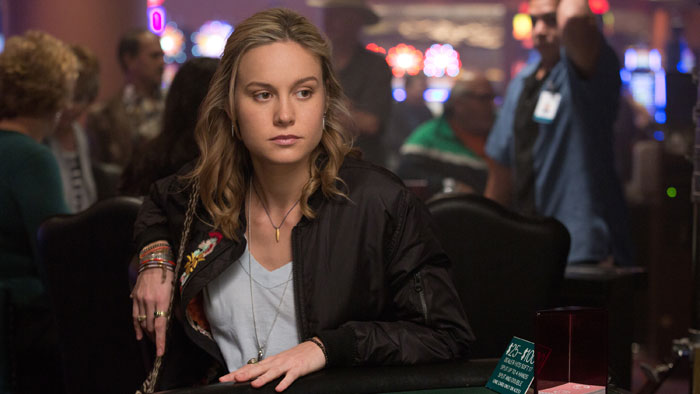
Have we really come to this? Has every possibility and every narrative angle really and truly been exhausted? Have we finally reached the point where every story has been told and retold to such an extent that 75 minutes of a woman solving crossword puzzles on New York subways is considered great art? Is this what it takes for a movie to be new and refreshing? Please, let it not be so.
When I first watched “Marathon”, my reaction was, “Give these filmmakers a break, it’s probably their first movie.” The premise is not an altogether terrible one-a young woman tries to solve as many crossword puzzles as she can in 24 hours. It’s a personal test and she’s out to better her record from the previous year of 77 puzzles solved. But, why exactly is she doing this? What’s the purpose of it all? Is this some kind of underground competition? We’re never really given any of these answers. Sure, we see the young woman having an obsessive-compulsive nervous breakdown trying to find the right environment for her work. We also get periodic messages from the protagonist’s mother on her answering machine. Apparently the mother used to do these marathons as well. Guess she’s retired and entered the crossword puzzle marathon hall of fame now.
I would venture to guess that random shots of New York City comprise more than three-quarters of “Marathon”. We’re treated to seemingly endless moving subway trains, people commuting, airplanes flying overhead, but not much action or development in the story. What is particularly amiss is that every bit of every shot is in focus. I know this is a strange thing to say, but hear me out. A subtle effect used on nearly every movie is a shallow depth of field. Through the ability to have certain characters or objects in focus while the rest of the scene is slightly blurred, the director is able to draw the audience to what is and what is not important in the scene. This is a trick so old and accepted that few audiences notice when it is present, but they do tend to perceive something missing when it is absent. Through all of “Marathon’s” scenery shots, most notably the repetitive subway clips, the entire screen is in perfect focus. So, apparently the whole scene is important. Only it isn’t. It can’t be, not for an hour and fifteen minutes.
The point of all these establishing shots, if there is one, came across early. But, is there really a deep hidden meaning (DHM) to redeem this hopelessly dry and nebulous film? No, at least nothing that hasn’t been done better before. If the theme is of trains and harsh industrialism, look no further than any film adaptation of “Anna Karenina”. Even the worst of these versions doesn’t belabor the point as badly. For the DHM of isolation in a big city, though it’s beaten to death at this point, you always have “Taxi Driver” and “Midnight Cowboy”. But audiences will have a harder time identifying with the puzzle solver than even the crazed Travis Bickle of “Taxi Driver”. How’s that for a bold statement? Think about it though, throughout “Taxi Driver” you know that Bickle wants to be somebody. He practices his responses in the mirror to try to build up a credible image for the public. He tries all different sorts of things, the problem is he doesn’t know who to be. “Marathon” never gives you this much. It doesn’t even allow you to see the answers to the various crossword clues. We get a nice close shot of the woman reading the question for #27 down, and then we see her filling in #2 across. Is she actually answering the puzzles correctly? We’ll never even know that for sure. A certain amount of mystery does add spice, but this much mystery is just noncommittal.
Through this all, I tried to remind myself that new filmmakers need to experiment and explore different styles in order to learn and grow. New filmmakers-was I ever wrong about that. It turns out that “Marathon’s” writer, director, producer, and editor has been making movies in this vein since the 1970s. “Marathon” is in fact director Amir Naderi’s third installment of his New York trilogy. This film has actually been shown on the Sundance Channel and also at many festivals, including Robert De Niro’s Tribeca Film Festival. I can only go back to my original question and wonder if these are the lengths one must go to in order to appear fresh and different.
It doesn’t matter whether you call it minimalism, non-narrative storytelling (no paradox there I guess), or an homage to Japanese Directors such as Akira Kurosawa. If you can’t convey to an audience who your characters are and why we should care about them, then you have accomplished nothing more than wasting time. Still, the subject of this movie could make for a good documentary. In the past couple years we’ve seen this happen with spelling bees and Scrabble contests, so crossword puzzles seem the next logical step. Perhaps it is, but a fictionalized account such as this film does not work.
Ludicrously long at this running time-even seven minutes would have overstated its case-“Marathon” truly lives up to its name.
